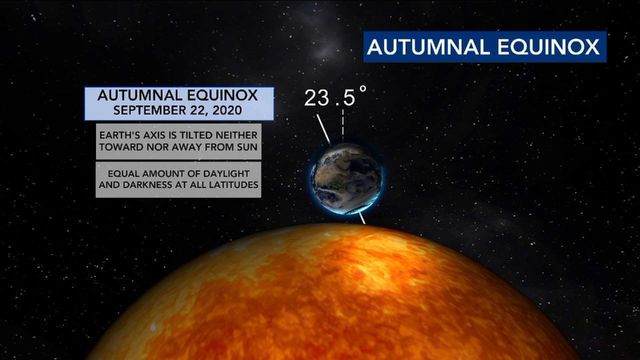Happy Solar Cycle 25
NASA and NOAA researchers annouced that the Sun had entered a new 11-year cycle of activity on Tuesday.
Posted — UpdatedAs the arrival of astronomical fall approaches with next week's September equinox, NASA and the National Oceanic and Atmospheric Administration (NOAA) jointly announced on Tuesday the Sun has entered a new season of its own.
NASA and NOAA regularly invite experts from around the world to predict solar activity over the coming years.
“Over the last 40 years, we’ve come to observe the Sun in much greater detail,” said Lika Guhathakurta, program scientist of the Heliophysics Division at NASA Headquarters. “It’s produced a wealth of information, but quantifying and modeling the solar cycle remains challenging. We’re working against how variable the Sun is, and the complexity of what happens inside the Sun.”
Solar cycles explained
Similar to the rise and fall of temperatures with the seasons on Earth, the Sun goes through periodic variations or cycles of high and low activity that repeat about every 11 years.
Scientists use the number of sunspots visible on the surface as an indicator of the level of activity within the Sun. Each cycle begins with a minimum sunspot count, reaches a maximum then fades back to a minimum beginning a new cycle.
Our Sun is a huge ball of electrically-charged hot gas, as the gas moves it generates a powerful magnetic field. Polarity of that field swaps each solar cycle. Researchers noticed the first signs of a new solar cycle in December 2019, when sunspots began appearing with reversed polarity.
Does the solar cycle explain climate change?
No.
Solar cycles are like long seasons, but still much too short to be the primary force driving the changes in Earth's climate we are currently seeing. The Sun's energy output only varies by about 0.15% over each solar cycle. Researchers have found evidence linking the 11-year cycle to changes in the Earth's stratosphere, not any other aspect of climate -- such as surface temperature, rainfall, wind patterns, etc.
Impact to us
"Space weather" might conjure up images of storms in space, but it actually refers to electrically charged particles from the Sun. After a few quiet years, storms, magnetic ones, are ramping up again on the Sun.
As we rely more and more on electronics in everyday life, our vulnerability to space weather grows, NOAA and other agencies monitor solar activity looking for extremes that could impact us on the ground and in space. They are also working to better predict these events.
Forecast for Solar Cycle 25
This is good news for exploration especially as NASA prepares to send astronauts back to the Moon with the Artemis program.
Related Topics
• Credits
Copyright 2024 by Capitol Broadcasting Company. All rights reserved. This material may not be published, broadcast, rewritten or redistributed.





